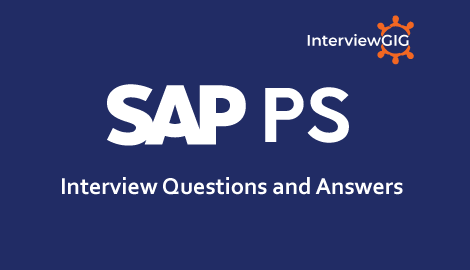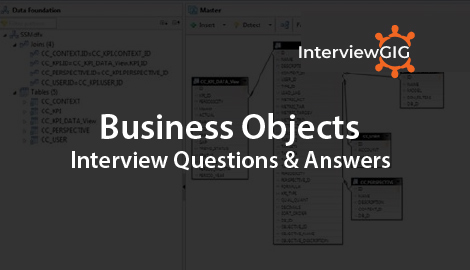What is Business Intelligence?
Business intelligence (BI) is a broad category of application programs and technologies for gathering, storing, analysing, and providing access to data to help enterprise users make better business decisions. BI applications include the activities of decision support, query and reporting, online analytical processing (OLAP), statistical analysis, forecasting, and data mining.
Which T-code is used to see log of transport connection?
In RSA1 -> Transport Connection you can collect the Queries and the Role and after this you can transport them (enabling the transport in SE10, import it in STMS
RSA1
Transport connection (button on the left bar menu)
Sap transport -> Object Types (button on the left bar menu)
Find Query Elements -> Query
—-Find your query
——Group necessary object
Transport Object (car icon)
Release transport (T Code: SE10)
Load transport (T Code: STMS)
Can you define index?
Indices/Indexes are used to locate needed records in a database table quickly. BW uses two types of indices, B-tree indices for regular database tables and bitmap indices for fact tables and aggregate tables.
Can you define Rollup?
Rollup is used to pack new DataPackages into the InfoCube aggregates. It is important to perform Rollup because than in InfoCube data will not be available while reporting on the aggregate.
What is the structure of InfoCube?
An InfoCube is used to store the data physically. It consists of a number of InfoObjects that are filled with data from staging. It has the structure of a star schema.
In SAP BI, an Infocube contains Extended Star Schema as shown above.
An InfoCube consists of a fact table which is surrounded by 16-dimension tables and master data that is lying outside the cube.
What is Partition of an InfoCube?
It is the method of dividing a table for report optimization. SAP uses fact file partitioning to improve performance. We can partition only at 0CALMONTH or 0FISCPER. Table partitioning helps to run the report faster as data is stored in the relevant partitions. Also table maintenance becomes easier.
How can you navigate to see the error idocs?
If it is fine check the IDOCs in source system go to BD87->give Ur user ID and date->execute->you can find Red status Idocs select the erroneous Idoc->Rt.click and select Manual process.
You need to reprocess this IDOC which are RED. For this you can take help of Any of your Team (ALE IDOC Team or Basis Team) Or Else
you can push it manually. Just search it in bd87 screen only to reprocess.
Also, try to find why this Idocs are stuck there.
What is data integrity?
Data integrity means no duplicate data. It is about eliminating duplicate entries in the database.
What is OLAP?
OLAP stands for Online Analytical Processing. It is a database which contain Historical data and the oldest data which is used to the business people.It comes from the data you have put in an OLTP database. OLTP means Online Transaction Processing.
Can you explain DTP?
Data transfer process (DTP) loads data within BI from one object to another object with respect to transformations and filters. In short, DTP determines how data is transferred between two persistent objects. It is used to load the data from PSA to data target (cube or ods or infoobject) thus, it replaced the data mart interface and the Info Package.
Can you define is BEx Map in SAP BI?
BEx Map is BW’s Geographical Information System (GIS). BEx Map is one of the characteristics for SAP BI, and it gives the geographical information like customer, customer sales region and country.
What are the data target administration tasks?
Data target administration task includes
- a) Delete Index
- b) Generate Index
- c) Construct database statistics
- d) Complete deletion of data target
- e) Compression of the info-cube etc.
Can you explain Rollup?
Rollup is used to pack new DataPackages into the InfoCube aggregates. It is important to perform Rollup because than in InfoCube data will not be available while reporting on the aggregate.
Can you define Infocube?
Infocube is a data storage area which has a same structure as that of star schema. If we wish to create a infocube we have to require one fact table surmounted by the four dimensions.
How we can debug errors with SAP GUI ?
To debug errors in SAP GUI we have to follow the path
- a) Run Bexanalyzer
- b) Business Explorer menu item
- c) Installation check
It will show an excel sheet with start button, on clicking on it, it will verify the GUI installation
What are the T-codes for Info-cubes?
T-codes for Info-Cubes are:
LISTSCHEMA: Show InfoCube schema
LISTCUBE: List viewer for InfoCubes
RSDCUBE, RSDCUBED, RSDCUBEM: Start InfoCube editing
Write the transaction codes for process chain?
RSPCM: Monitor daily process chains
RSPC: Process Chain Maintenance
RZ20: To see log for process chains
RSPC1: Process Chain Display
What are the T-codes for Info-cubes?
The T-codes for Info-Cubes are
LISTSCHEMA: Show InfoCube schema
LISTCUBE: List viewer for InfoCubes
RSDCUBE, RSDCUBED, RSDCUBEM: Start InfoCube editing
What is multi-provider in SAP BI? What are the features of Multiproviders?
Multi-provider is a type of info-provider that contains data from a number of info-providers and makes it available for reporting purposes.
- a) Multi-provider does not contain any data.
- b) The data comes entirely from the info providers on which it is based.
- c) The info-providers are connected to one another by union operations.
- d) Info-providers and Multi-providers are the objects or views relevant for reporting.
- e) A multi-provider allows you to run reports using several info-providers that are, it is used for creating reports for one or more than one info-provider at a time.
What is the use of Conversion Routine?
It is used to convert data types from internal format to external format.
How we can un-lock objects in Transport Organizer?
In transport organizer to unlock the object, go to SE03à , Request TaskàUnlock objects. When you enter your request and select unlock and execute, it will unlock the request.
Can you explain Data Ware-house Hierarchy?
It is basically an approach that is considered when it comes to defining the data aggregation. Basically, it’s a logical structure and the best thing is the users are free to consider it for the purpose of data organization. The common example of this approach is the time dimension hierarchy.





